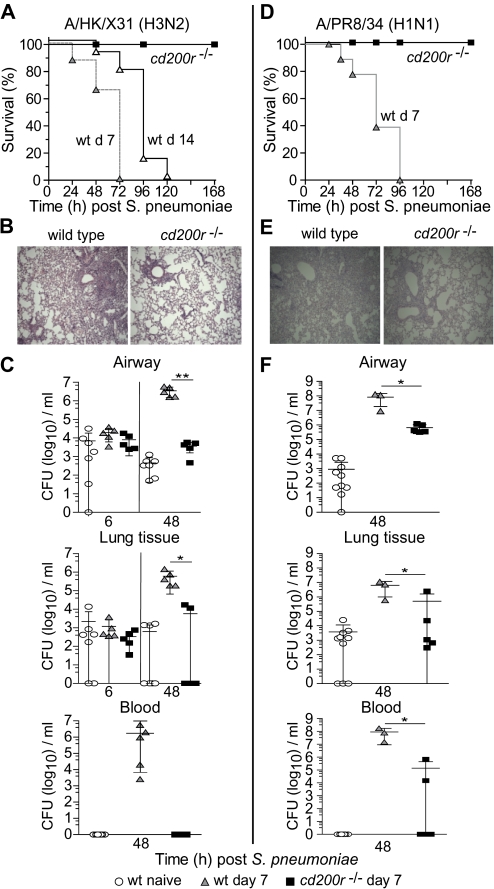Figure 2.
Loss of CD200R prevents influenza-induced secondary bacterial superinfection. Survival of wild-type (wt) and cd200r−/− mice after infection with 104 colony-forming units (CFU) Streptococcus pneumoniae 7 days (gray triangles) or 14 days (open triangles) following A/HK/X31 (H3N2) (A) or A/PR8/34 (H1N1) (D) influenza virus infection. Representative hematoxylin and eosin–stained lung sections from day 7 A/X31 (H3N2) (B) or A/PR8/34 (H1N1) (E) influenza-infected wild-type and cd200r−/− mice 48 hours after S. pneumoniae infection. Total bacterial CFU recovered from the airway, lung tissue, and peripheral blood at 6 hours and 48 hours following 104 cfu S. pneumoniae in naive wild-type mice (circles) or those at day 7 of a A/HK/X31 (C) or A/PR8/34 (H1N1) (F) influenza infection. Survival differences were determined using the log-rank Mantel–Cox test, and all other data were tested using a 2-tailed Mann–Whitney t test with 95% confidence intervals. The data are representative of 3 independent experiments (n = 5–10 mice per group). * P < .05, ** P < .01, *** P < .001 versus corresponding group.

